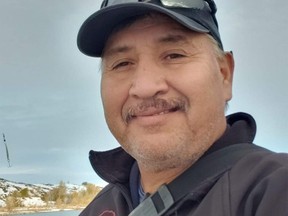‘It’s huge as far as wanting our children to be back home,’ said Piikani Chief Troy (Bossman) Knowlton

Piikani Nation has received $50 million for a new school that will accommodate 600 students from kindergarten to Grade 12 and engage them in extracurricular activities, including music, sports, cooking and the trades.
The new school will replace the community’s existing institution, built in 1959, which admits about 300 students and members of the Nation say is filled with asbestos.
Most importantly, the new institution will allow many children who currently board with other families in nearby towns for their education to attend school in their reserve.
“It’s huge as far as wanting our children to be back home,” said Piikani Chief Troy (Bossman) Knowlton.
Indigenous Services Minister Patty Hajdu, who was in Calgary to make the announcement, acknowledged the significance of the project.
“It’s a really big deal,” she said.
“It is an opportunity for the community to continue the work that they’ve been doing to regain control over their education system … and continue that work of trying to heal from a history of colonization in residential schools.”
The design of the school boasts sweeping, one-storied structures with walls etched in Indigenous paintings. Among various elements, the school features a basketball court, a fireplace and a tipi, an Indigenous conical tent, with various carvings on the floor and a projector screen inside.
Piikani Nation states the school will also include Blackfoot programs that will allow students to remain steeped in their culture.
Knowlton said the school will be built over two years, and in addition to outside contractors, the Nation plans to hire its community members to build it. “We’re hiring our trades (workers), labourers and architects.”
The project, largely initiated by the community, has been in the works since 2017. Studying its feasibility and finalizing the designs took up most of the time, Hajdu said.
“There’s been fulsome consultations — every project goes through a feasibility stage, a preliminary design stage, and then a final design stage, and then finally approval,” she said.
“So these are long projects. To build anything of this size takes time, especially if you want to do it with the full collaboration of the community.”